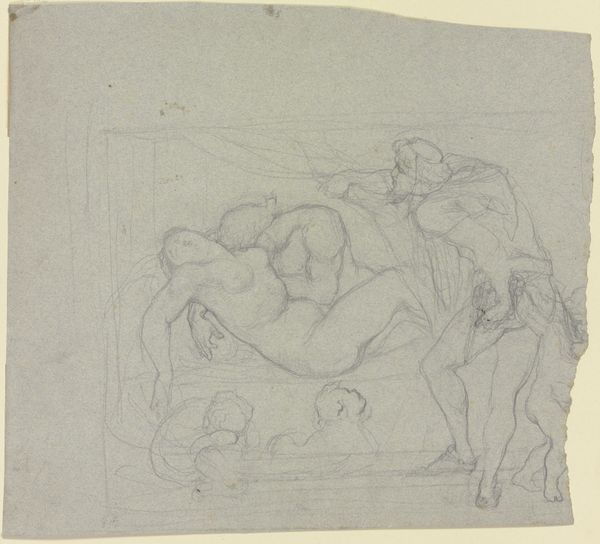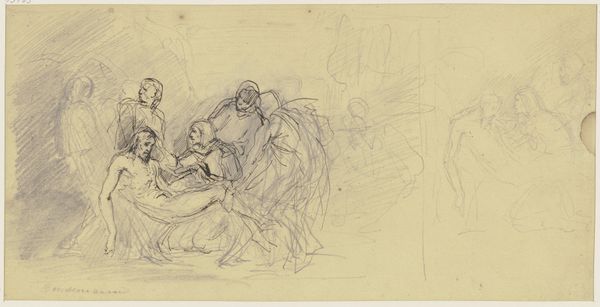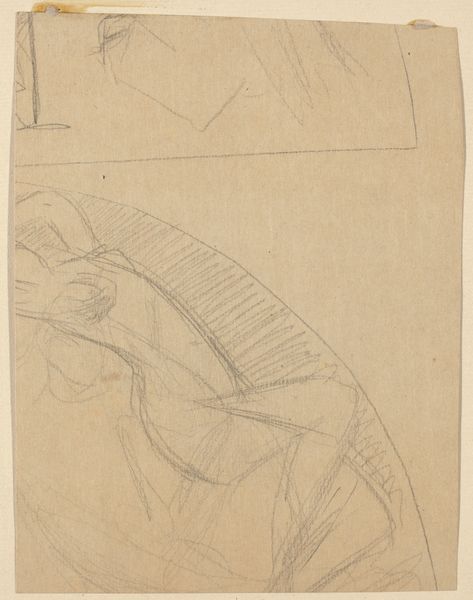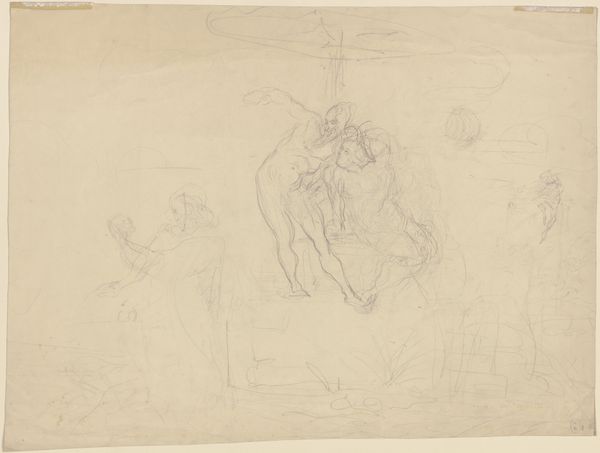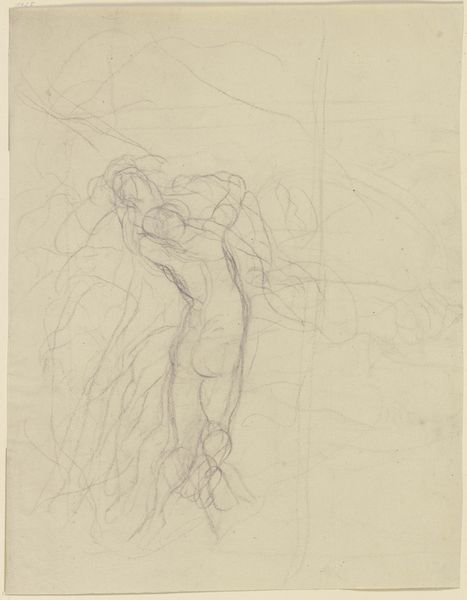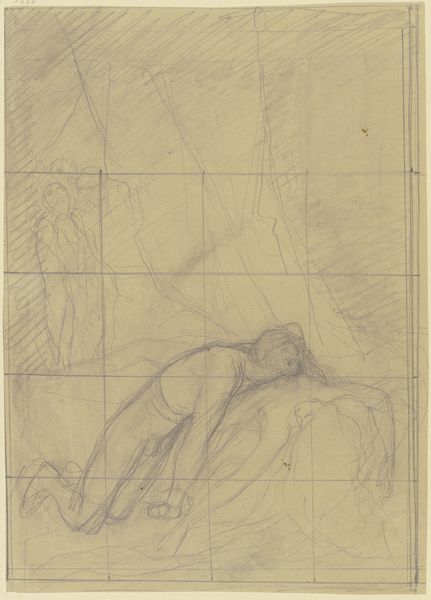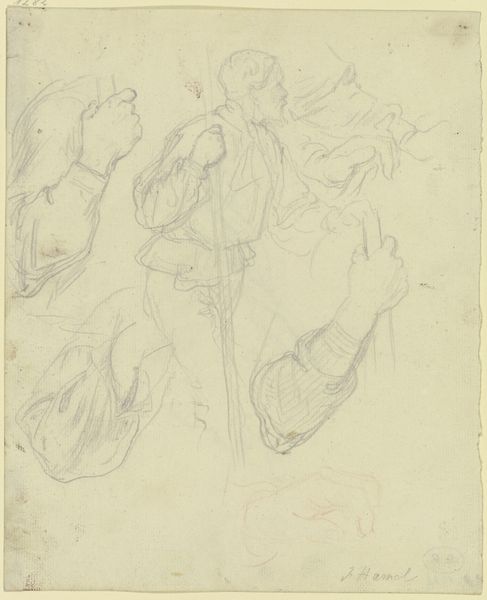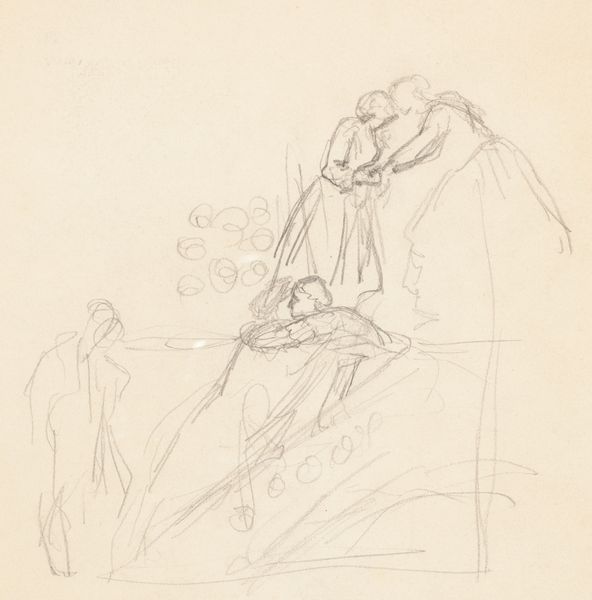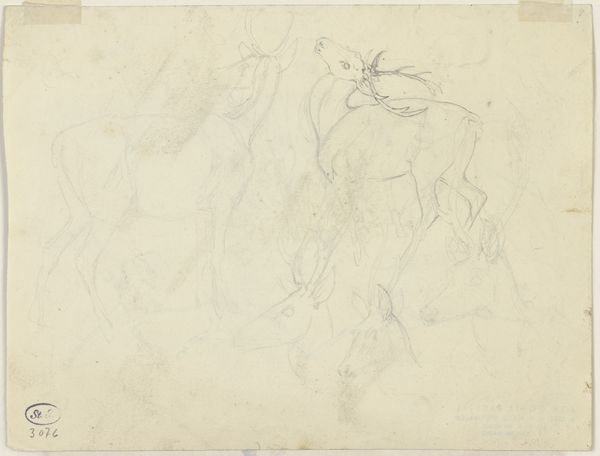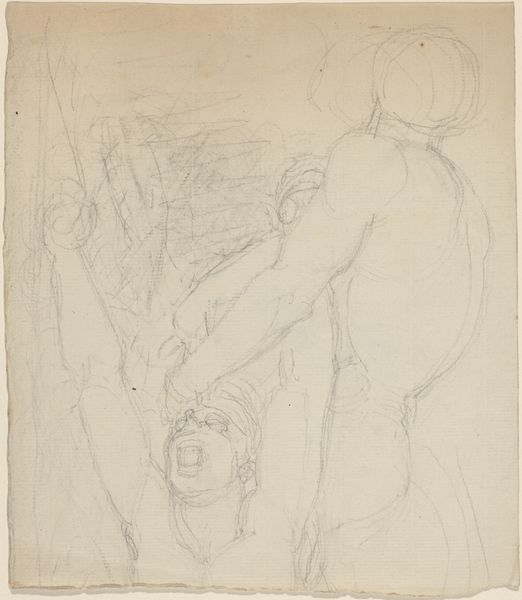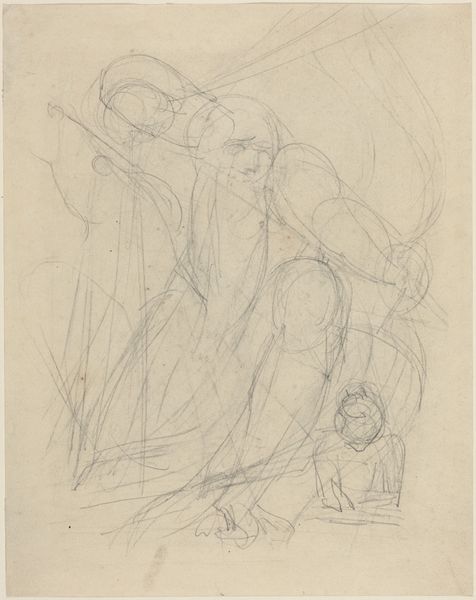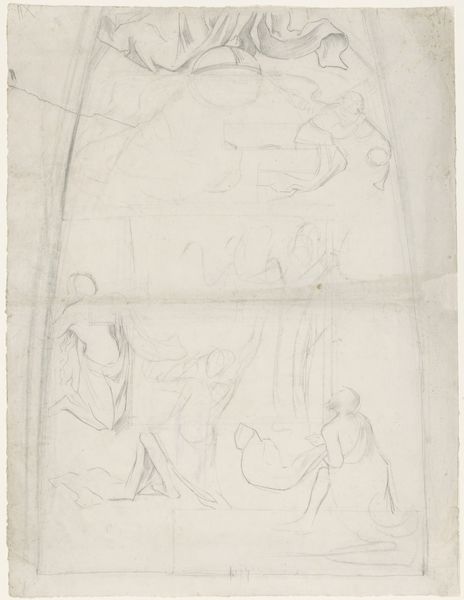![Los and His Spectre [verso] by William Blake](/_next/image?url=https%3A%2F%2Fd2w8kbdekdi1gv.cloudfront.net%2FeyJidWNrZXQiOiAiYXJ0ZXJhLWltYWdlcy1idWNrZXQiLCAia2V5IjogImFydHdvcmtzL2NmMGI4ZTg4LTBiM2YtNDhkZC04ODRjLTIxMGZlYmY3M2FhMy9jZjBiOGU4OC0wYjNmLTQ4ZGQtODg0Yy0yMTBmZWJmNzNhYTNfZnVsbC5qcGciLCAiZWRpdHMiOiB7InJlc2l6ZSI6IHsid2lkdGgiOiAxOTIwLCAiaGVpZ2h0IjogMTkyMCwgImZpdCI6ICJpbnNpZGUifX19&w=3840&q=75)
drawing, paper, pencil
#
drawing
#
figuration
#
paper
#
romanticism
#
pencil
#
line
#
history-painting
Dimensions: overall: 20.3 x 15.9 cm (8 x 6 1/4 in.)
Copyright: National Gallery of Art: CC0 1.0
Curator: This drawing, "Los and His Spectre," was created by William Blake sometime between 1804 and 1807, crafted with pencil on paper. It looks as though the paper itself bears a grid of faintly drawn squares. Editor: Immediately, I’m struck by the palpable tension—the rough lines seem to vibrate with unease. It’s a raw, unfinished glimpse into inner turmoil. The figures seem to struggle within themselves. Curator: Yes, Blake was deeply invested in the creative process as a struggle. Note how the use of pencil allows for these light, almost frantic marks. Consider this a raw sketch that showcases the artistic labor, devoid of polish, which emphasizes Blake's materialist and laborious creative choices. Editor: And those figures! They're archetypes locked in an eternal dance. We have the reaching upward—is that supposed to represent aspiration, the "Los"? Then below, there is that chained, darker form representing torment, the "Spectre". This resonates with ancient mythologies—the eternal struggle between the spiritual and the earthly, mirrored in Blake's symbolic framework. Curator: Absolutely. This raw and unfinished style might be due to the scarcity and price of materials that dictated production methods during Blake's era. Cheaper and quicker techniques facilitated quicker design turnover to satisfy the public's demand for visual content. Editor: But I see that struggle reaching far beyond simple consumerism. This drawing encapsulates a potent inner conflict. It makes me think of alchemical processes where base matter undergoes transformation to gold. This image holds layers of philosophical meaning and depth within those frenzied, almost panicked lines. Curator: Perhaps. But consider Blake’s broader body of work: mass-produced illustrations for popular books, as well as his elaborate illuminated books. The lines separating artistic production and popular print become hazy, revealing a commercial reality that artists faced. Editor: Perhaps. Yet, that inherent commercial nature cannot take away from the piece’s almost universal struggle—that dialectic between our higher and lower selves, rendered through striking symbolic imagery. In its barest form, it holds emotional power, a resonance across time. Curator: An intriguing notion; regardless of the debate, one thing we seem to agree upon is the capacity of this particular artwork to reveal more upon deeper examination. Editor: I would concur; indeed, there is a striking timelessness in the symbols, making Blake ever-relevant.
Comments
No comments
Be the first to comment and join the conversation on the ultimate creative platform.
